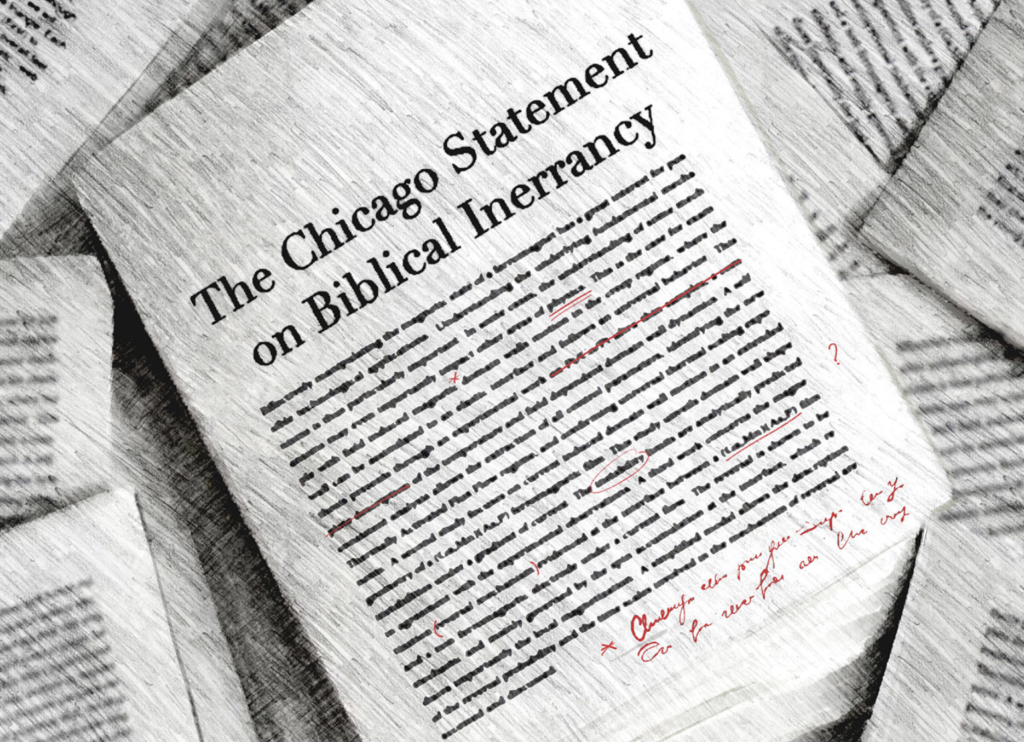The exposition entitled “Transmission and Translation”,
“Since God has nowhere promised an inerrant transmission of Scripture, it is necessary to affirm that only the autographic text of the original documents was inspired and to maintain the need of textual criticism as a means of detecting any slips that may have crept into the text in the course of its transmission. The verdict of this science, however, is that the Hebrew and Greek text appear to be amazingly well preserved, so that we are amply justified in affirming, with the Westminster Confession, a singular providence of God in this matter and in declaring that the authority of Scripture is in no way jeopardized by the fact that the copies we possess are not entirely error-free.
Similarly, no translation is or can be perfect, and all translations are an additional step away from the autographa. Yet the verdict of linguistic science is that English-speaking Christians, at least, are exceedingly well served in these days with a host of excellent translations and have no cause for hesitating to conclude that the true Word of God is within their reach. Indeed, in view of the frequent repetition in Scripture of the main matters with which it deals and also of the Holy Spirit’s constant witness to and through the Word, no serious translation of Holy Scripture will so destroy its meaning as to render it unable to make its reader.”
While this may be consistent with the overall framework of the Chicago Statement on Biblical Inerrancy, it demonstrates a potential inconsistency within its own context. The Chicago Statement emphasizes the inspiration and authority of the original autographs of Scripture and acknowledges the need for textual criticism due to the lack of an inerrant transmission. However, the assertion that the copies we possess are not entirely error-free and that translations can never be perfect raises questions about the application of inerrancy and its implications for the transmission and understanding of the Word of God.
The Chicago Statement affirms the inspiration of the original documents, implying that God’s communication was without error in those autographs. However, the statement also recognizes that the transmission of these autographs may not have been inerrant, leading to the necessity of textual criticism to identify and rectify any errors that might have entered the text during transmission. This stance underscores the fallibility of human processes and the potential for discrepancies between the autographs and extant copies.
The inconsistency arises when the statement acknowledges the “singular providence of God” in preserving the Hebrew and Greek texts, suggesting an impressive preservation of the texts despite the admission of potential errors in copies. This raises the question of the extent to which this “singular providence” ensures the preservation of the text’s original meaning and integrity. If the copies that we possess are not entirely error-free, then what assurance do we have that these preserved texts accurately convey the intended message of the inspired autographs? This inconsistency within the statement could create uncertainty about the reliability and authority of the transmitted text.
Additionally, the statement addresses translations, acknowledging that all translations are removed from the autographs and inherently imperfect. While it asserts that English-speaking Christians are well served by numerous high-quality translations, it does not explicitly address the potential challenges of translating nuanced theological concepts and cultural contexts accurately. This oversight could imply that translations do not pose significant challenges to understanding the Word of God, potentially undermining the complexity of translation work and its impact on accurate interpretation.
Furthermore, the statement suggests that no serious translation would so destroy the meaning of Scripture as to render it incomprehensible. However, this assertion overlooks the fact that certain theological nuances, historical contexts, and linguistic intricacies can be difficult to convey precisely in translation. The potential for misinterpretation or oversimplification of complex biblical concepts could lead to a diminished understanding of Scripture’s depth and richness.
In conclusion, the inconsistency within the statement from the Chicago Statement on Biblical Inerrancy lies in its simultaneous recognition of potential errors in transmitted copies and the assertion of a “singular providence of God” in preserving the text. Additionally, the statement’s treatment of translations could overlook the challenges inherent in conveying the original meaning across linguistic and cultural boundaries. While the intention of the statement is to affirm the authority of Scripture, these inconsistencies could raise concerns about the extent to which the intended message of the inspired autographs is accurately conveyed in the extant copies and translations.

